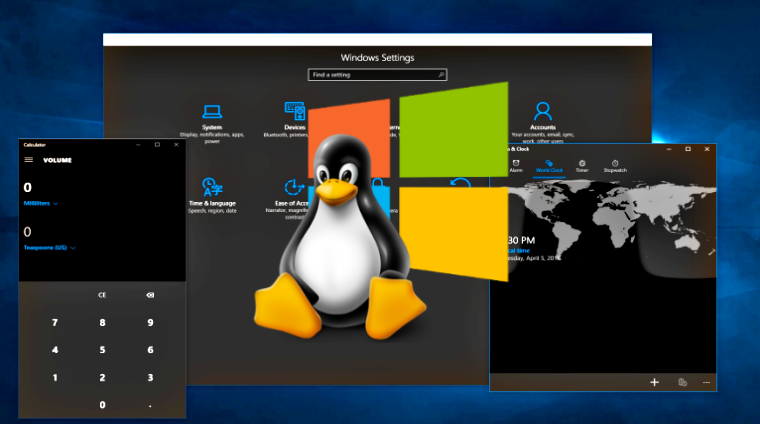Bashware: Malware Can Abuse Windows 10's Linux Shell to Bypass Security Software
Bashware
is the name of a new technique that allows malware to use a new
Windows 10 feature called Subsystem for Linux (WSL) to bypass
security software installed on an endpoint.
Back
in 2016, Microsoft announced WSL as a way to run a Linux shell (Bash)
inside the Windows 10 operating system. This was done to appeal to
the developer community who primarily uses Linux due to its ease of
use when it comes to programming-related tasks.
WSL
works by taking Bash commands users type in a CLI, converting the
shell commands to their Windows counterparts, processing the data
inside the Windows kernel, and sending back a response, to both the
Bash CLI and a local Linux file system.
The
WSL feature has been under development in a beta stage since March
2016, but Microsoft recently announced WSL would reach a stable
release this autumn with the release of the Windows 10 Fall Creators
Update, scheduled for October 17.
Bashware attack is invisible to current security software
In
a report issued late last night, security researchers from Check
Point have published technical details about Bashware, a technique
that allows malware devs to use Windows 10's secret Linux shell to
hide malicious operations.
Researchers
say that current security software, including next-gen antivirus
solutions, fail to detect these operations.
This
happens because all lack support for Pico processes, a new class of
Windows processes that Microsoft added to handle WSL operations.
Bashware needs admin access, but that may not be a problem
The
Bashware attack is not a surefire method to run malicious operations
undetected on Windows. A Bashware attack, above all, requires
administrator privileges.
Malware
that reaches a Windows 10 PC needs admin-level access so it can
enable the WSL feature, which comes disabled by default, and then
turn on Windows 10 Development Mode.
The
bad news is that the Windows attack surface is plagued by many EoP
(Elevation of Privilege) flaws that attackers can exploit to gain
admin-level access to turn on WSL and load the necessary drivers
using the DISM utility. Turning on WSL is a silent operation,
requiring a single CLI command.
Furthermore,
researchers say that an attacker that has gained administrator
privileges won't have any issues to put Windows 10 in Developer Mode.
Attackers can achieve this by modifying a registry key and waiting
for (or force) a user to reboot his PC.
At
this stage, the attacker has enabled WSL, but the Linux system
install doesn't yet exist on the user's computer. Researchers say
that tools present on the user's system allow the attacker to
silently download the Linux file system from Microsoft's servers and
complete the WSL installation.
When
this process finishes, the attacker can utilize the newly installed
Bash CLI to run malicious operations. Researchers say the attacker
can use Linux commands to interact with Windows PCs, WSL translating
everything for the attacker, but if the attacker doesn't want to
modify already existing scripts, he can install Wine — a Windows
emulator for Linux.
Basically,
Wine allows the attacker to execute malicious Windows commands that
Wine translates to Linux commands, that WSL transforms back to
Windows operations, and runs on a targeted system.
Security software will need to support Pico processes
Researchers
published details about the Bashware attack, so security software
vendors can research and add support for WSL and Pico processes
before the release of the Windows 10 Fall Creators Update.
Technical
details about the Bashware attack are available in Check Point's
report. Researchers also published a video demoing a Bashware attack.
The
first security researcher to point out that WSL is an attack surface
for Windows 10 was CrowdStrike's Alex Ionescu in a talk he gave at
the Black Hat Europe 2016 security conference.
Researchers
that want to keep up to date with WSL development can do so via
Microsoft's WSL portal.




Comments
Post a Comment